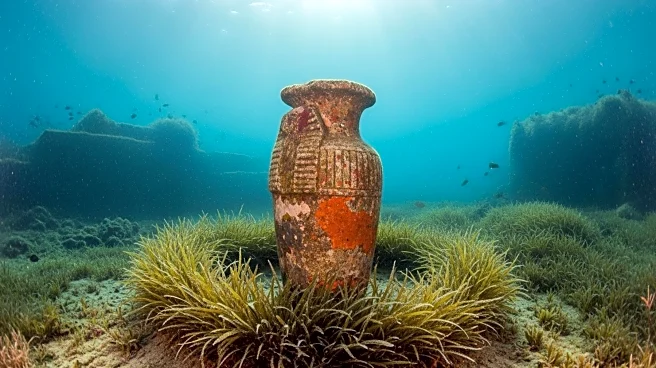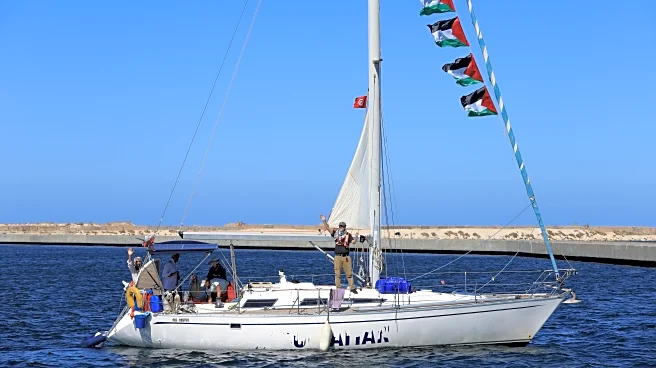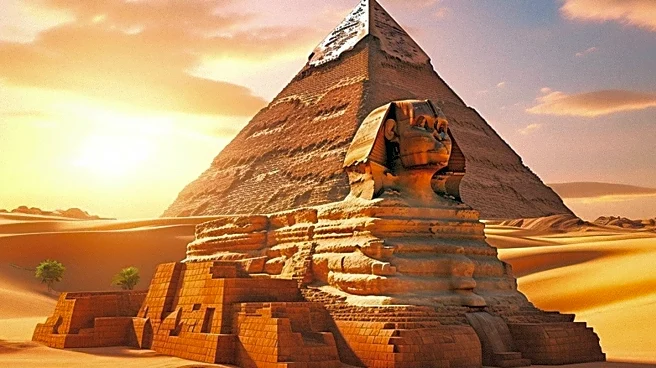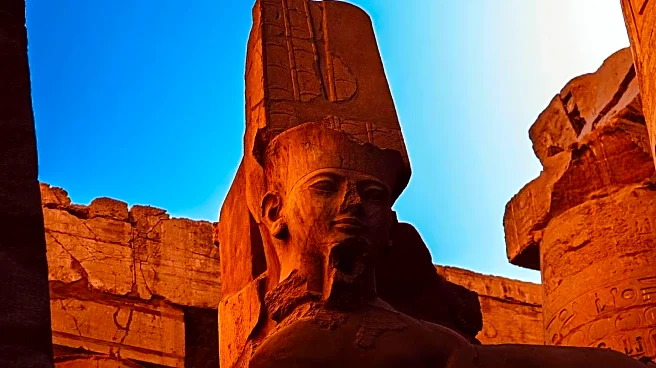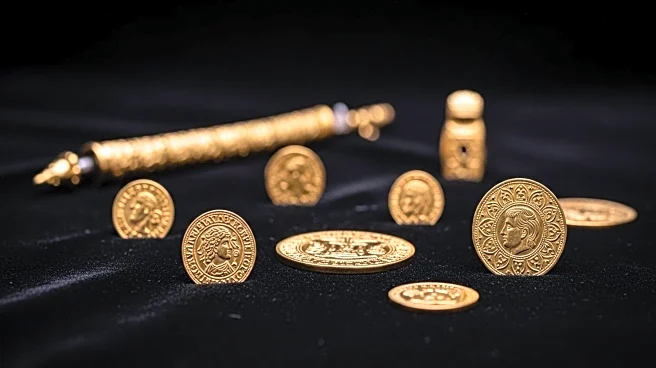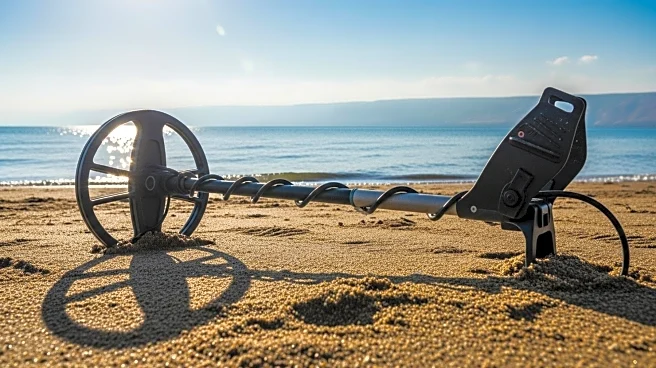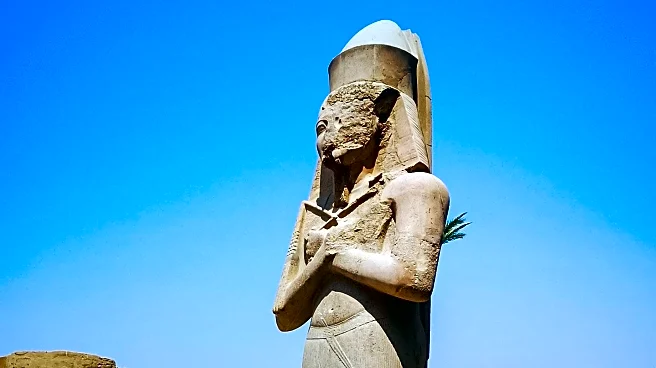What is the story about?
What's Happening?
A team of underwater archaeologists has uncovered a sunken port off the coast of Egypt, potentially offering insights into Cleopatra's lost tomb and ancient maritime activities. The discovery was made near the ancient temple of Taposiris Magna, located about 30 miles west of Alexandria. The site includes towering structures, polished stone floors, and ship anchors, all dating back to Cleopatra's era. The Egyptian Ministry of Tourism and Antiquities announced the findings, which were featured in a National Geographic documentary. The discovery is part of a broader effort led by Kathleen Martínez, who has been searching for Cleopatra's tomb for 20 years. The port's existence was previously unknown, adding a new dimension to Egyptian maritime archaeology.
Why It's Important?
The discovery of the sunken port is significant as it enhances understanding of Egypt's historical maritime activities and economic structures. It also fuels ongoing debates about Cleopatra's final resting place, which remains a mystery. The port's connection to Cleopatra could provide valuable information about her reign and the cultural exchanges between Egypt and the ancient world. The find underscores Egypt's role as a hub of maritime activity, potentially attracting further archaeological interest and tourism. The discovery could also lead to new insights into the political and religious dynamics of Cleopatra's time.
What's Next?
The archaeological team plans to continue excavations at the temple and underwater site, with hopes of uncovering more artifacts that could lead to Cleopatra's tomb. Martínez believes that finding the tomb will answer many questions about Cleopatra's life and reign. The Egyptian Ministry of Tourism and Antiquities supports ongoing research efforts, which may include further underwater exploration and analysis of artifacts. The discovery could prompt renewed interest in Egypt's ancient history and potentially lead to more significant archaeological finds.
AI Generated Content
Do you find this article useful?
